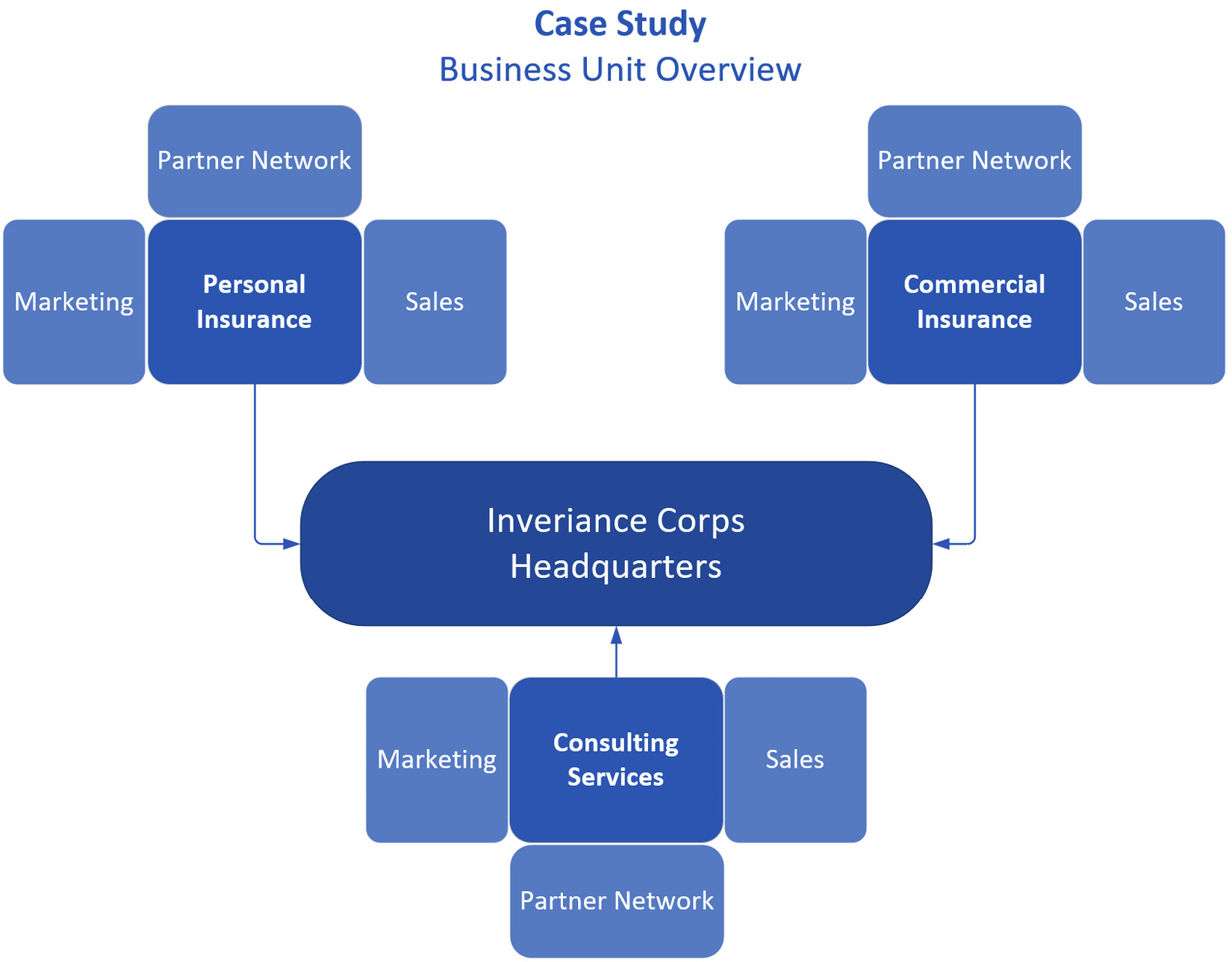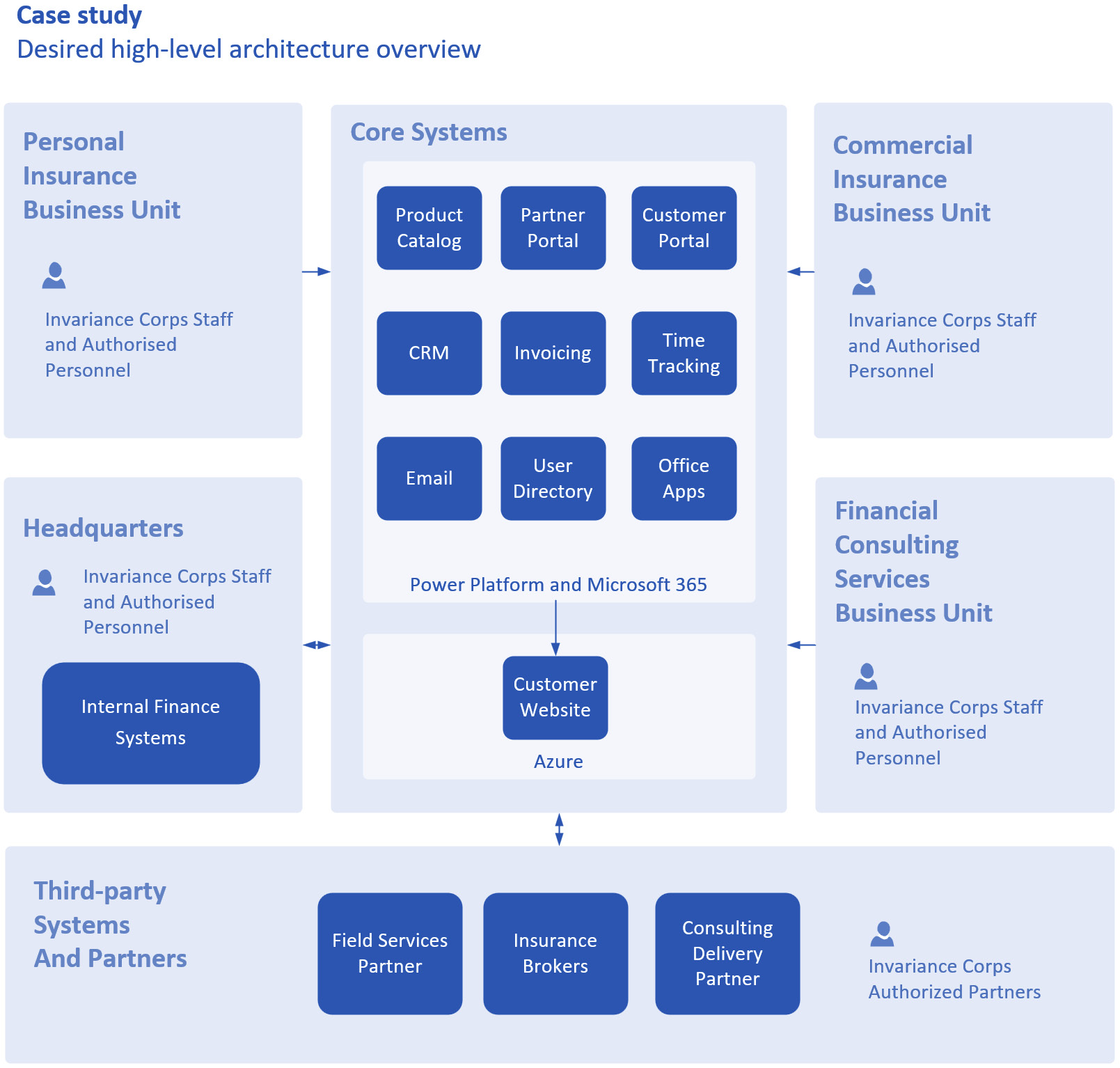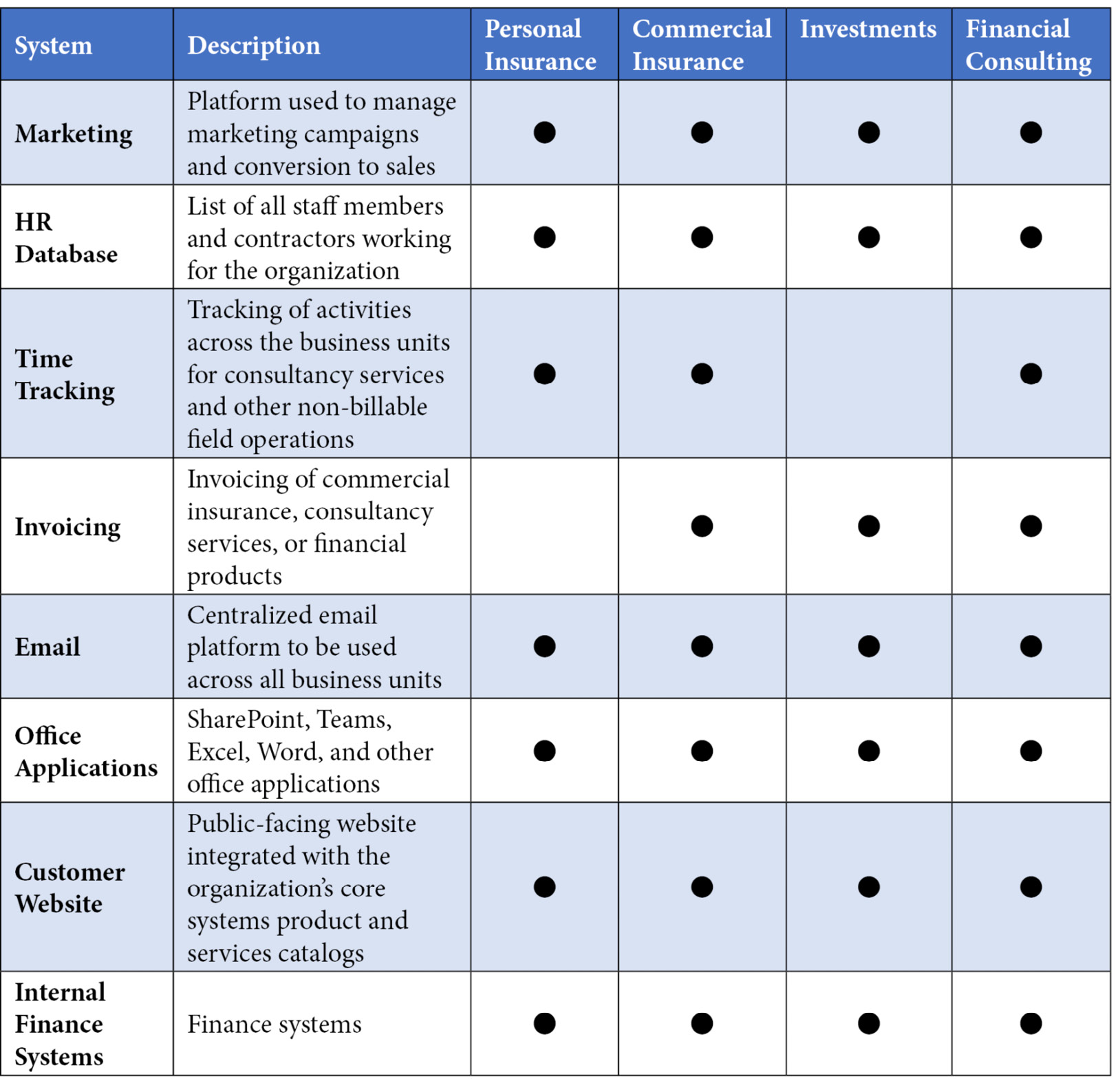Chapter 2: The Digital Transformation Case Study
This chapter introduces Inveriance Corps, a large financial services organization with a clear mandate, to streamline business operations through the digital transformation of its core legacy systems and processes. Security of its data and processes is paramount to this organization, which prides itself on its successful customer data protection track record. In this chapter, you will learn about the current state of the organization’s infrastructure, and the range of requirements requested by this theoretical customer, which are reviewed and applied to use case scenarios throughout this book.
In this chapter, we are going to cover the following main topics:
- Introducing Inveriance Corps, the legacy organization with a vision
- The organization’s infrastructure and processes, as-is
- Inveriance Corps’ vision of the future
By the end of this chapter, you will learn to read high-level requirements, anticipate potential problems, and understand the architectural and organizational structure referenced throughout the implementation life cycle presented in this book.
Introducing Inveriance Corps
Established in the early 1970s, having weathered the stormy 1980s financial markets, and the 2000s ups and downs, Inveriance Corps is a fictional organization and the focus of our digital transformation efforts. It is a financial services organization and a leader of the industry with a legacy to live up to, and legacy systems and processes underpinning the business.
The organization has grown through organic expansion and several acquisitions. The board of directors has come to the realization that times have changed. To continue to lead in today’s world will require a thorough digital transformation of its systems and business processes. You are being tasked with leading that journey. The goal is to take stock of the current infrastructure and business processes, and consolidate and streamline the solution architecture, paving the way for increased revenue, reduced costs, and enabling further expansion.
The three revenue streams at Inveriance Corps are as follows:
- Personal insurance products
- Commercial insurance products
- Financial consultancy services
The organization has 40 offices across the world, with headquarters in Chicago and main offices in London, Tokyo, and Singapore. Multiple acquisitions over the years have resulted in multiple systems performing the same function across business units.
Understanding the architecture as-is
Inveriance Corps has three business units, each having dedicated marketing and sales teams. Each business unit has a network of partners supporting sales and delivery activities.
The following diagram illustrates the three business units:

Figure 2.1 – Inveriance Corps business unit structure
Each business unit has a separate product catalog, CRM system, and invoicing platform. These systems are connected to the company headquarters via manual processes and data transfers. The following diagram illustrates the architectural overview of the organization’s core systems:

Figure 2.2 – Inveriance Corps architectural overview as-is
Each business unit also currently manages its own sales, CRM, and finance systems. They integrate with head office central systems mostly through manual updates. The various business units, mostly gained through acquisitions, share few resources between them.
Understanding the to-be architecture
Managing the multiple disparate systems across the three business units results in high maintenance and support overheads. Communication across business units is time-consuming and cumbersome as each uses its own CRM, sales, and finance systems. Manual processes dominate all three business units to varying degrees.
The mandate is for the transformation of the organization’s business processes into a single cohesive organization, supported by a single set of core systems supporting all three business units.
The core system will deliver the following functionality to all business units:
- A directory of all staff and users within the organization
- A centralized customer relationship management database
- A centralized partner management platform
- All business units to use the same sales, service, and field service (where applicable) platform
The goals of the digital transformation exercise are as follows:
- Reduce system maintenance and support costs.
- Open business opportunities through cross-business-unit collaboration and data sharing.
- Increase sales through responsive and streamlined product offering portals.
- Improve customer experience through a centralized and dedicated support platform.
- Enable expansion by consolidating operations.
- Improve conversion rates by automating the customer onboarding journey for all business units.
The following diagram illustrates the desired systems architecture overview at Inveriance Corps:

Figure 2.3 – Inveriance Corps architectural overview to-be
The following table lists the core systems that make up the desired to-be architecture:


Table 2.1 – High-level list of desired business systems
With this, we have understood the current and future architectures.
Summary
Inveriance Corps is an organization with a pressing need to initiate a complete digital overhaul of its business processes and organizational structure to thrive and remain competitive. In this chapter, we have laid out the case study that will be used throughout the exercises in this book. With a high-level understanding of their current architecture and a clear mandate to consolidate resources, we are now at the starting line of the organization’s digital transformation journey.
In the coming chapters, you will analyze the organization’s architecture and individual systems in detail, perform a fit-gap analysis against the Power Platform, Dynamics 365, Microsoft 365, and Azure platforms, and create a blueprint to deliver Inveriance Corps’ vision of a centralized business, and take that vision right through to fruition.
|
System |
Description |
Personal Insurance |
Commercial Insurance |
Investments |
Financial Consulting |
|
Marketing |
Platform used to manage marketing campaigns and conversion to sales |
⚫ |
⚫ |
⚫ |
⚫ |
|
HR Database |
List of all staff members and contractors working for the organization |
⚫ |
⚫ |
⚫ |
⚫ |
|
Time Tracking |
Tracking of activities across the business units for consultancy services and other non-billable field operations |
⚫ |
⚫ |
⚫ | |
|
Invoicing |
Invoicing of commercial insurance, consultancy services, or financial products |
⚫ |
⚫ |
⚫ | |
|
|
Centralized email platform to be used across all business units |
⚫ |
⚫ |
⚫ |
⚫ |
|
Office Applications |
SharePoint, Teams, Excel, Word, and other office applications |
⚫ |
⚫ |
⚫ |
⚫ |
|
Customer Website |
Public-facing website integrated with the organization’s core systems product and services catalogs |
⚫ |
⚫ |
⚫ |
⚫ |
|
Internal Finance Systems |
Finance systems |
⚫ |
⚫ |
⚫ |
⚫ |
